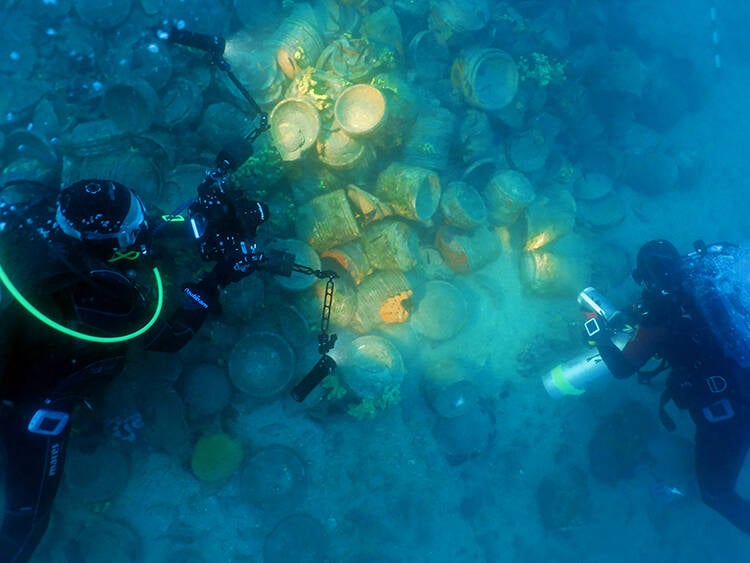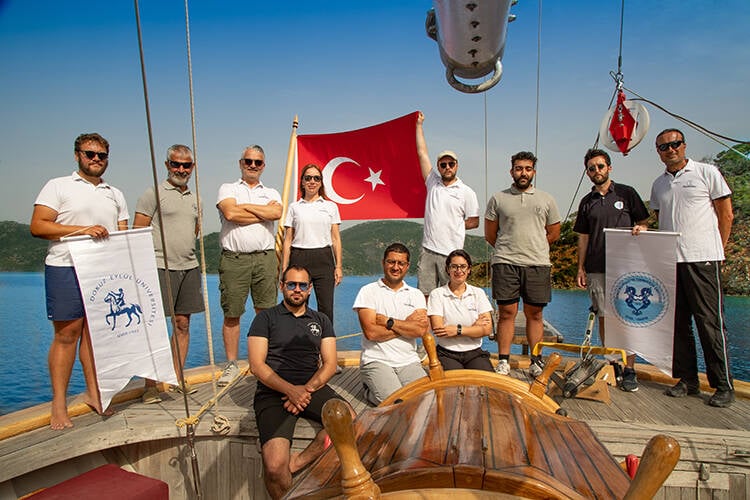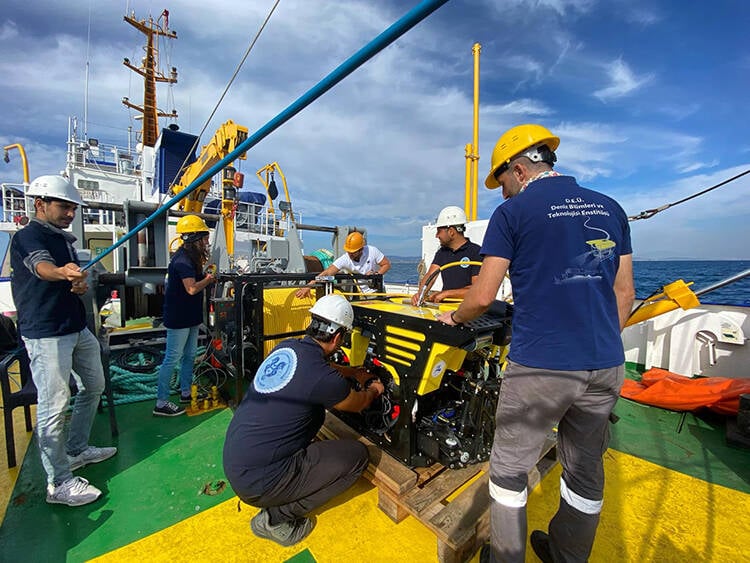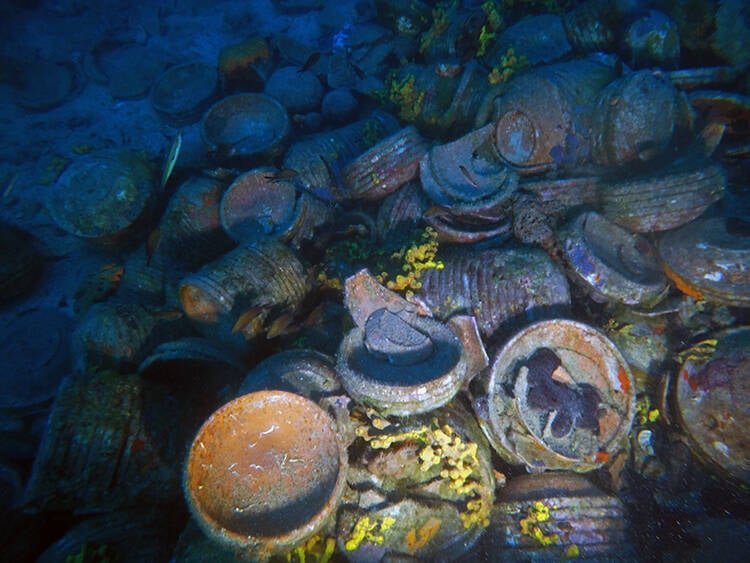Dating to the fifth century C.E., the ship is believed to have sunk during a storm while transporting its massive load of ceramics across the Aegean Sea.

AADivers examine the pile of ceramic plates that went down with the ship more than 1,500 years ago.
In the waters off Türkiye’s western coast, researchers have uncovered a 1,500-year-old shipwreck brimming with thousands of artifacts.
The discovery, part of the Blue Heritage Underwater Research Project led by Dokuz Eylül University, used sonar and advanced underwater robotics to locate the shipwreck 141 feet below the surface of the northern Aegean. The wreck contained 10,000 plates stacked in clusters — the largest known plate cargo ever discovered in the Aegean and Mediterranean Seas — along with a small number of amphorae.
Details from the ceramics suggest the existence of ancient trade connections between several regions, including Cyprus, North Africa, Egypt, and Syria. Likely while en route to Anatolia, Greece, or Italy, the vessel sank, leaving its cargo untouched for more than a millennium.
Researchers Discover An Ancient Shipwreck In The Northern Aegean

AAThe archaeological team responsible for making the discovery.
Researchers from the Dokuz Eylül University Underwater Cultural Heritage and Maritime History Application and Research Center (SUDEMER) recently joined the Blue Heritage Underwater Research Project to study Türkiye’s underwater cultural heritage.
In 2024, the research team decided to focus on the northern Aegean. While the team was examining the waters 2.5 miles off the coast of Ayvalık with sonar technology, they discovered an anomaly 141 feet down. Using underwater robots, they found that the anomaly was a merchant shipwreck.

AAThe crew prepares the underwater robot.
“We dived into these anomalies with our high-tech devices and located the wreck. This discovery was made possible thanks to our advanced robotic systems because it is approximately 2.5 miles offshore at a depth of 43 meters,” SUDEMER Director Associate Professor Dr. Harun Özdaş told Turkish news outlet Anadolu Ajansı.
Once the shipwreck’s precise location was confirmed, divers descended to the site, marking the first time the vessel had been seen in 1,500 years.
Plates, Amphorae, And Other Artifacts Discovered At The Ayvalık Wreck

AAA collection of thousands of plates among the wreckage.
The research team uncovered a staggering amount of artifacts at the shipwreck site, including thousands of plates and a small number of amphorae.
“We encountered a large pile in an area outside of a geography that can be found with standard dives. The characteristic of this pile is that it is not the amphoras we usually detect in our work, but rather consists of nested plates, each in clusters of approximately 15-20. We found the largest plate wreck known in the Aegean and Mediterranean to date,” Dr. Özdaş explained.
The plates were accompanied by a small number of amphorae: large, oval-shaped storage containers commonly used by Greeks and Romans for transporting goods such as oil and wine.
“We have reached the number of findings to open a museum. The ship’s main cargo was plates. Photogrammetric studies showed us that there were 10 thousand plates on the surface,” Dr. Özdaş said.
Studies of the plates and other ceramics hint that the ship likely originated from Cyprus, North Africa, Egypt, or Syria. It was sailing to Anatolia, Greece, or Italy when it sunk in the northern Aegean with its cargo — likely during a storm.
Until the discovery of this wreck, no clear evidence of trade between these regions had ever been found underwater. The excellent preservation of the wreck has provided researchers with a wealth of historical information.
“Reaching such great wealth in our 30 years of work in the Turkish seas has been a great source of happiness for us. One of the most important features of this wreck is that it has not been touched until today, an untouched wreck has been preserved. When you look at it in terms of diversity and number of finds, it contains a very large collection,” Dr. Özdaş concluded.
Research is ongoing, with the ultimate goal of uncovering more details about historic Mediterranean trade networks that were in place more than 1,000 years ago.
After reading about this ancient shipwreck, dive into 15 of the creepiest ghost ships ever discovered on the high seas. Then, read about the Seawise Giant, the longest ship ever built.





